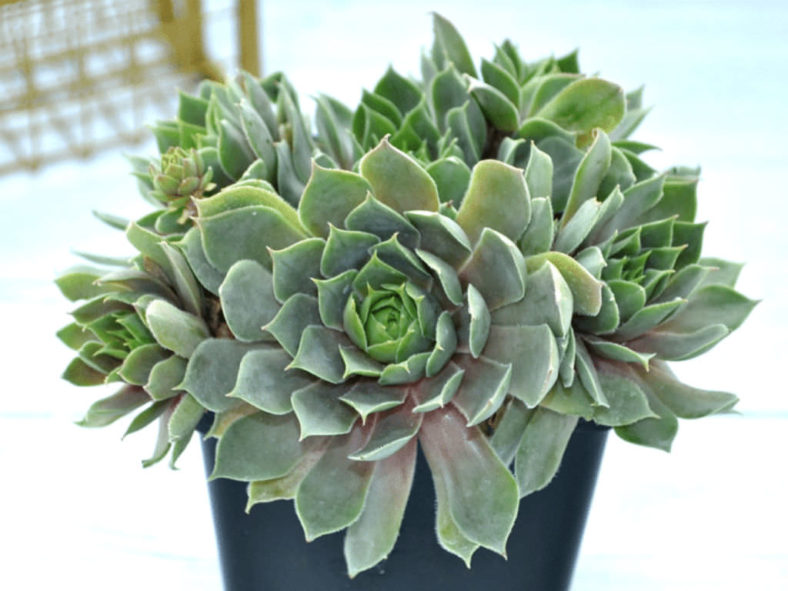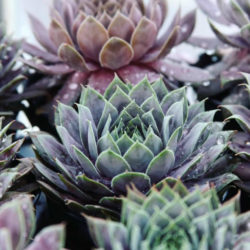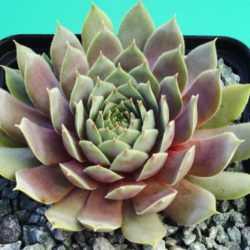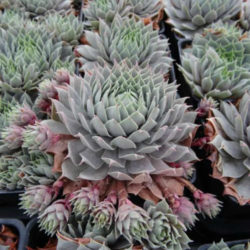Scientific Name
Sempervivum 'Pacific Blue Ice'
Common Name(s)
Hen and Chicks, Houseleek, Live Forever
Scientific Classification
Family: Crassulaceae
Subfamily: Sedoideae
Tribe: Sedeae
Subtribe: Sedinae
Genus: Sempervivum
Description
Sempervivum 'Pacific Blue Ice' is an attractive succulent that forms small rosettes of unique, icy blue-green leaves that can flush pink to purple, especially in cooler temperatures. The rosettes produce offsets on short stolons, forming a dense clump. The pointed leaves have short cilia on the margins.
In summer, a flower stalk arises from the center of mature rosettes bearing clusters of pink, star-shaped flowers. This plant is monocarpic, which means, the rosette dies after flowering.
This hybrid is also distributed as Sempervivum Chick Charms® Berry Blues™ or Sempervivum 'Berry Blues'.
Origin
Sempervivum 'Pacific Blue Ice' is a hybrid created by Gary Gossett in 1998 in the United States.

Hardiness
USDA hardiness zone 5a to 9b: from −20 °F (−28.9 °C) to 30 °F (−1.1 °C).
How to Grow and Care
Sempervivums are not difficult to grow, provided they are not waterlogged and killed from excess watering. They can be easily grown outdoors and in containers, and they earned the name "Houseleeks" from their tendency to root on the roofs of houses. After the mother plant flowers, it will naturally die, but the plant has likely produced many offsets that will continue to grow by this time. These are excellent for cold windows. Sempervivum earned their popular name "Hen and Chicks" from their growth habit. The mother plant, or hen, sends off numerous offsets, which will cluster around her base like chicks. These offsets can be easily repotted, or the plants can be left to form a clumping mat.
Repot as needed, preferably during the warm season. To repot a succulent, make sure the soil is dry before repotting, then gently remove the pot. Knock away the old soil from the roots, making sure to remove any rotted or dead roots in the process. Treat any cuts with a fungicide. Place the plant in its new pot and backfill with potting soil, spreading the roots out as you repot. Leave the plant dry for a week or so, then begin to water lightly to reduce the risk of root rot.
See more at How to Grow and Care for Sempervivum.
Links
- Back to genus Sempervivum
- Succupedia: Browse succulents by Scientific Name, Common Name, Genus, Family, USDA Hardiness Zone, Origin, or cacti by Genus


